Camellia is that type of houseplant that stands out for its luxurious colors and decorativeness. Such a flower effectively smoothes in any interior, while they are not picky and capricious. But for a camellia at home to please with its chic flowering, she needs to provide proper care.
Content
Care for camellia at home
Camellia is an ornamental plant, which in autumn and winter is covered with large flowers of different colors. But even during the rest period, the decorative qualities of camellia are also high, since the sheets of the flower are dense with a glossy surface.
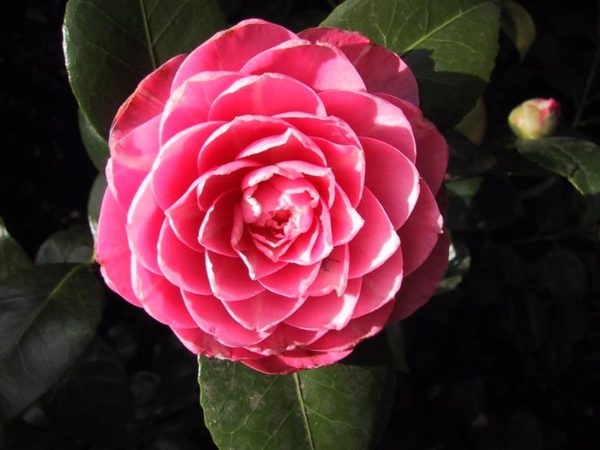
Camellia is often called the Chinese rose because of the similarities in both appearance and smell. If at home to provide the plant proper care, then camellia can grow up to 4 meters in height.
- Illumination
Camellia loves light, but diffused, so it is better to put it on the windows of the western and eastern sides of the house. If there was a place for her only on the southern windows, then you need to protect her from direct sunlight, but the north side is completely unsuitable for the flower, since there is not enough light. In summer, it is better to take the plant outside, just do not leave it in the place where bright sunlight falls.
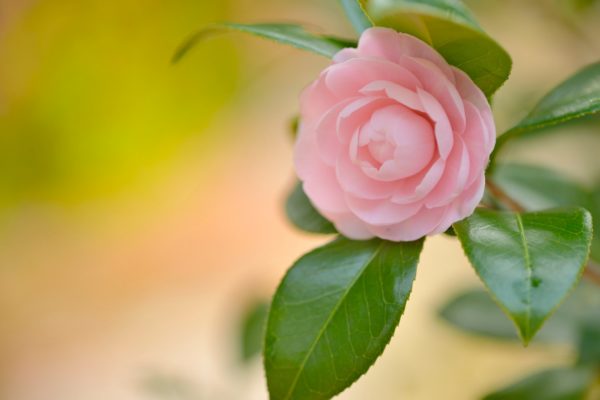
To form a beautiful bush, the pot with the plant needs to be periodically rotated around the axis, but in no case can this be done during the period when the buds have formed on the plant, camellia can simply drop them.
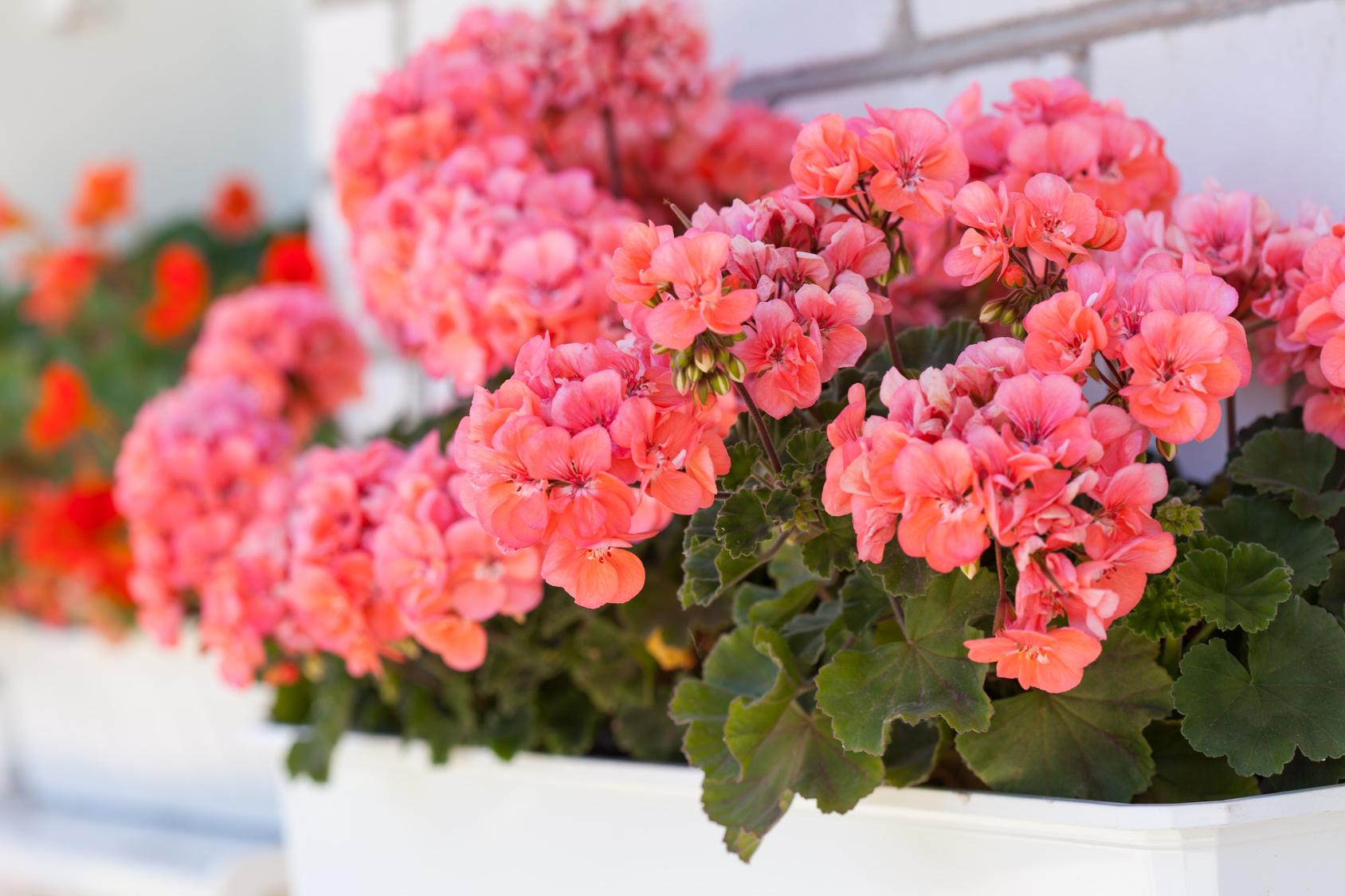 You may be interested in:
You may be interested in:- Temperature mode
The main difficulties in the cultivation of camellia is the correct maintenance of the temperature regime. So in spring and summer, camellia needs heat, so the temperature should not be lower than 20 ° C. When the buds begin to form on the plant, the temperature must be lowered to 18 ° C.
But during the flowering period, such a plant does not tolerate high temperatures, a maximum of 12 ° C. If the temperature is higher, then the flowers may lose their elegant appearance or completely fall off. Also, the room in which the camellia is located should be regularly ventilated.
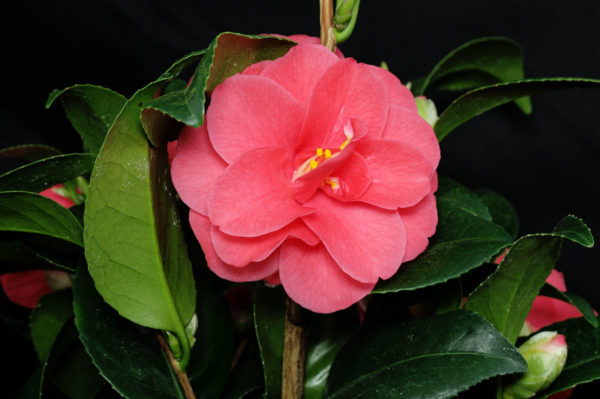
- How to water
In the hot season, camellia should be regularly and abundantly watered, most importantly, to prevent water from stagnating in the soil. Watering is necessary when the topsoil is dry. Watering is carried out only with defended soft water.
In winter, camellia should be watered carefully, since when overflowing, the soil starts to sour, this will lead to the leaves of the plant becoming brown in color, and the buds will simply die out. If, on the contrary, the soil is overdried, then the plant can lose all its leaves.
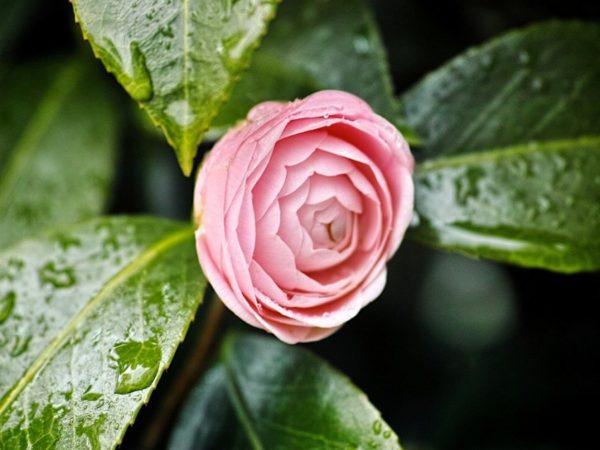
- Humidity
Camellia needs to be systematically moistened, for example, using a spray gun or put a pot of plants on a pallet with decorative pebbles and water. Spray the plant carefully so that water does not fall on the flowers.
In the room with the plant, you can put an air humidifier, which will simplify the task to maintain the desired humidity level.
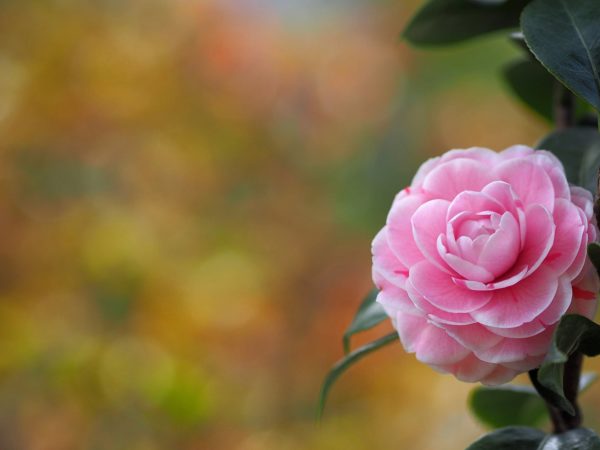
- Fertilizer
During the period of active growth, camellia must be fed with organic and mineral fertilizers. During the formation of buds, top dressing must be completely stopped. If you read the reviews of other gardeners, it can be noted that at home, camellia responds well to a weak concentration of chicken droppings.
- Pruning
By the end of the flowering period, you can trim the plant by removing the excess part of the crown or by way of stimulating the growth of buds in the sinuses. This will allow you to get neat and beautiful bushes.
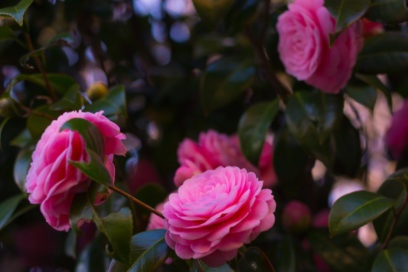
- Transplant Features
Camellia has a fairly developed root system, so every 2-3 years it needs to be transplanted into a larger pot. Soil plays an important role for transplanting, it must be acidic and light, since heavy soil simply does not allow the roots to “breathe” freely and they begin to rot. Also alkaline and calcareous soils are not suitable, in them the plant will simply die.
 You may be interested in:
You may be interested in:To transplant the plant without damaging the roots, it is transferred to a large pot directly with a lump of earth, and then free space is filled with fresh soil. After transplanting in the early days, it is important to spray the plant every day and monitor the soil moisture. If you add a little hydrogel to the soil, this will provide optimal moisture for the flower and prevent rotting of its roots.
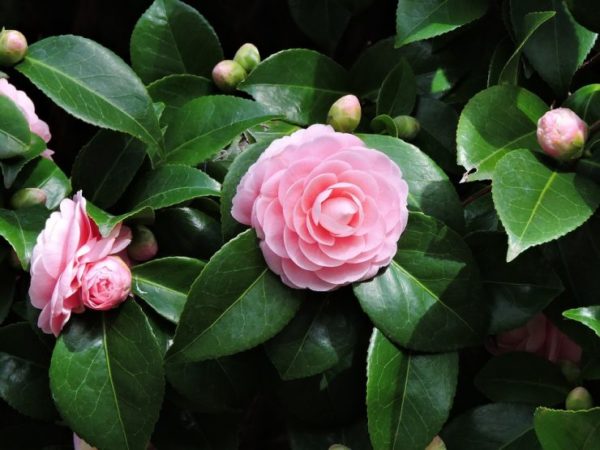
According to the timing of the transplant, opinions among gardeners differ. Some believe that the plant should be transplanted at the end of flowering, others believe that the optimal period for transplantation is the flowering period itself, however, with the second option, you can harm the flowers. But in the period from April to the end of autumn transplanting camellia is strictly forbidden, so this is the period of its active growth.
After the purchase, camellia should not be subjected to stressful situations, which means that it is impossible to transplant it immediately. At home, her departure in the early days will be to ensure complete rest in a cool room with a minimum of sunlight for two weeks. How to transplant a flower can be seen in the video.
Seed cultivation
Propagation by seeds will allow you to grow camellia at home, but the seeds themselves must be purchased in specialized stores, and preferably in flower greenhouses. If you independently collect seeds from a plant, then they will lose all their original characteristics of the variety.
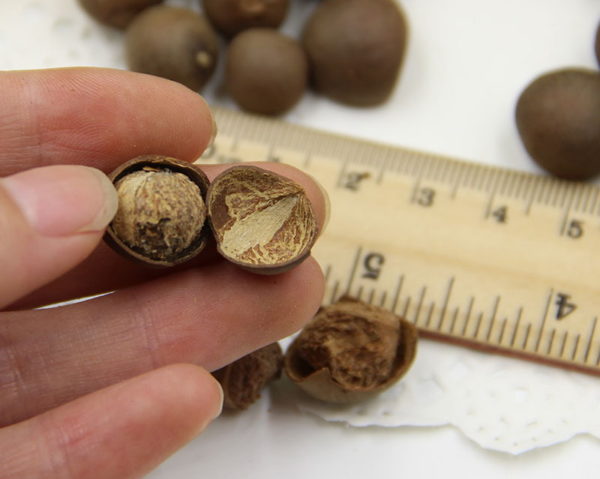
If the seeds are fresh, then before sowing they should be stored only in a cool place, otherwise they will simply dry out. If seeds from packages are used for sowing, then they need to be soaked in water and left overnight. Also, in dry seeds, it is better to violate the integrity of the shells, so they will germinate faster.
The following soil mixtures are suitable for sowing seeds:
- a mixture of perlite and sphagnum moss;
- a mixture of peat and river sand;
- substrate for azaleas or camellias;
- heather compost;
- vermiculite.
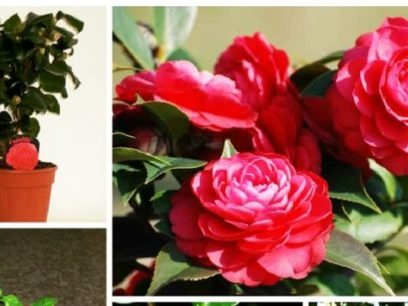
You can plant the seeds of the plant immediately in small pots of diameters of 9 cm. To do this, fill them with a soil mixture, water, put seeds on top, squeeze a little into the ground and sprinkle. We cover the pots with foil and put in a darkened warm place. Prior to seedling, it is important to monitor soil moisture, prevent stagnation of water and ventilate.
As soon as the seedlings grow up to 8 cm and form 4 true leaves, the seedlings can be transplanted into a pot with a diameter of 1 liter, and you need to trim the tip of the root system to stimulate its branching. The following transplant can be done as soon as the sprouts are well strengthened.
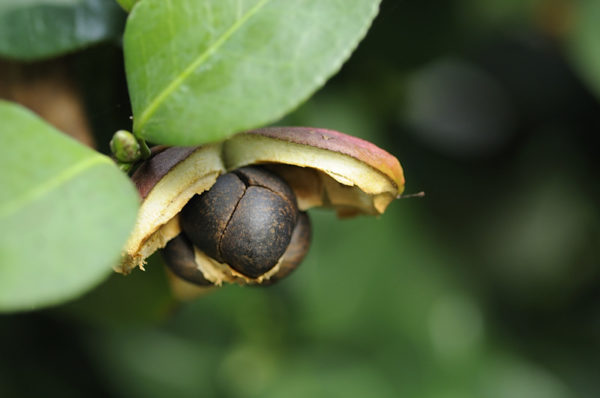
Propagation by cuttings
Propagation by cuttings is a more affordable way to grow camellia at home. For this, apical shoots are taken from an adult plant, but only in January or July.The length of the handle should be from 6 to 8 cm with 3-5 leaves.
First, cuttings need to be soaked in a heteroauxin solution, and then planted in a humidified mixture of peat and sand. Leave the pot with seedlings at a temperature of 20 to 23 ° C.
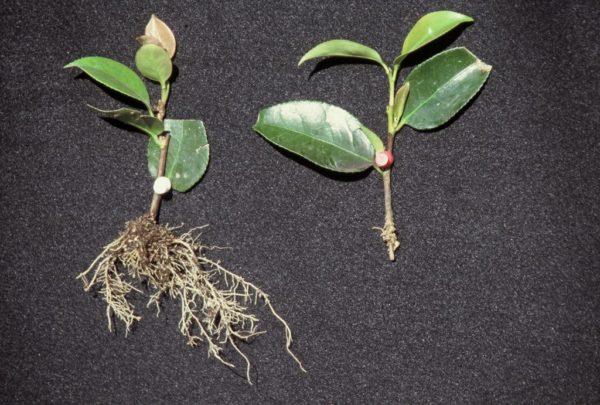
It will take at least 2 months to root the cuttings, but if reproduction occurred in the winter, the period of development of the root system may be slightly delayed. After the first transplant, the seedling should be regularly watered and sprayed.
Vaccination propagation
Vaccination propagation of camellia is suitable for more experienced gardeners. And here there are two ways to vaccinate: splitting and butt. The latter option is used if the plant is poorly rooted by cuttings.
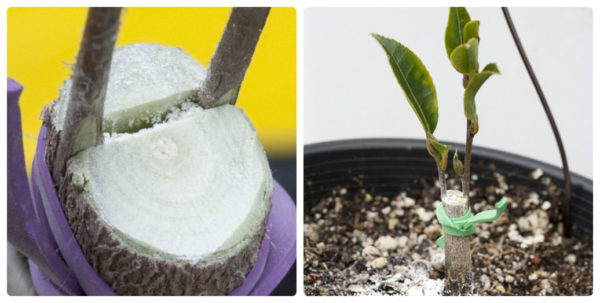
Vaccination is carried out only in January and already developed buds from the tops of the shoot are used. If the grafted plant is kept in a room with a temperature of 20 ° C, then the vaccines will germinate after 2 months. The young plant at home needs to be provided with proper care, which consists of watering, spraying, controlling humidity, cutting the shoots, and also do not allow the camellia to get burns, otherwise its leaves will simply fall off, as in the photo.
In the second year, the plant can be transplanted into a pot with a diameter of 9-10 cm, in the third - into a pot of 11-14 cm in diameter and use a mixture of peat, turf, heather, leafy land and sand.
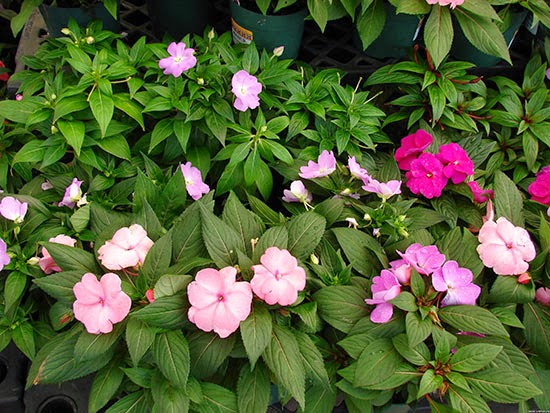 You may be interested in:
You may be interested in:Diseases and pests
Camellia is a whimsical flower and if it is not provided with appropriate care at home, the houseplant will begin to hurt and suffer from pest attacks. Therefore, we look at the photo of the consequences of improper care, find out the cause and try to eliminate it.
If the buds fall, the leaves become covered with brown spots, the plant itself began to fade, then the root system is rotting. The roots begin to rot due to excessive watering, when the soil is very waterlogged and the moisture simply soups. Therefore, camellia needs to be transplanted as soon as possible into new soil, which will allow moisture to pass through and provide free access of air to the root system.
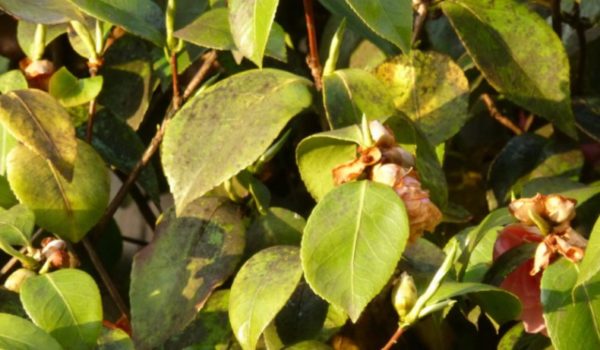
During the transplant, all damaged roots must be removed. After transplanting, the plant does not need to be watered simply enough to spray it. Many gardeners advise not to transplant rotting plants, but simply to reduce watering, but this method does not always help save the flower, only if the roots are slightly damaged.
If brown spots began to appear on the leaves, but at the same time the flower itself feels good, then most likely the plant suffered sunburn. In this case, it must be protected from direct exposure to sunlight. Also, flower burns can appear if you water the plant during lunch hours.
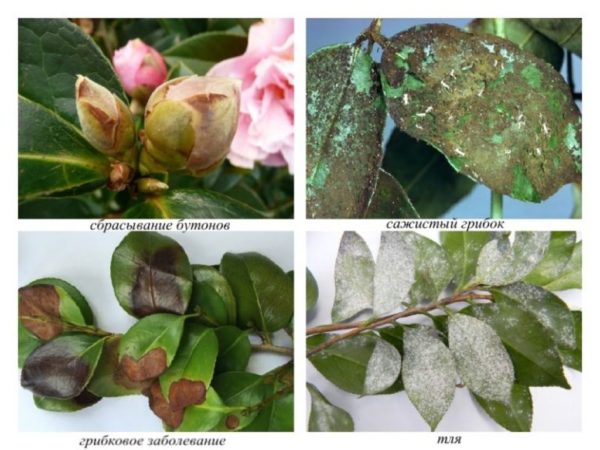
The appearance of brown spots may also indicate that the flower fell ill with a disease such as phylostictosis. The cause of this disease can be an increased level of humidity in the room. In this case, damaged areas of the plant must be removed, the leaves themselves treated with copper sulfate, and of course, the flower should have a normal microclimate in the room in which it is located.
Sometimes greyish spots may appear on the leaves of the plant. The cause of this phenomenon may be oidium. This is a disease against which only sulfur or fungicidal drugs can help.
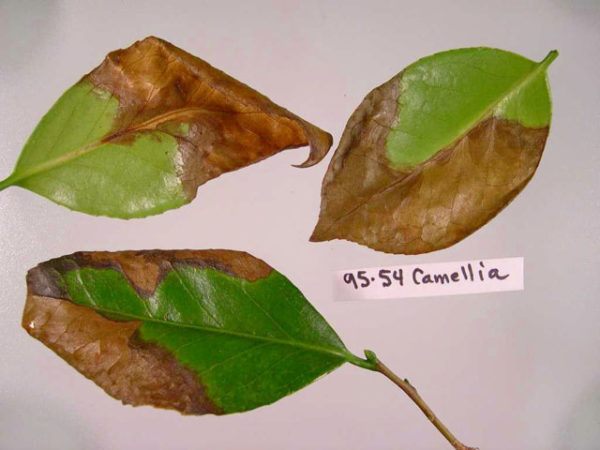
Camellia has a weakness for certain fungal diseases. Symptoms include the appearance of black-gray spots on the leaves and brown spots on the petals. Fungicides will help to heal the flower, but only if the fungus has affected the flower to a lesser extent. In case of severe damage, it is better to throw the plant away, since the fungus can migrate to other plants.
Diseases of camellia can also be caused by pests that any grower can detect even with the naked eye:
- a mealybug, such a pest is easily replaced when a white coating appears on the petals and leaves. In this case, areas of white clusters need to be treated with soapy water, and with severe damage, use kalbofos;
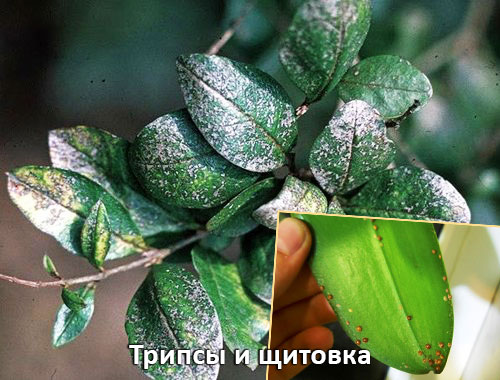
- aphid is itself a frequent pest, due to which camellia leaves begin to become covered with yellow spots and curl. In this case, special aerosols will help, which need to process the bush. But it is immediately worth noting that the procedure must be repeated every 3 days, since adult insects cannot be destroyed at a time;
- spider mite - such a pest can settle on a plant in a dry microclimate. It is quite simple to find it by the accumulated white cobwebs on the shoots and leaves. Yes, and the tick itself is quite noticeable because of the bright red color. Chemical aerosols or oil emulsions will help rid a flower of such a “tenant”.
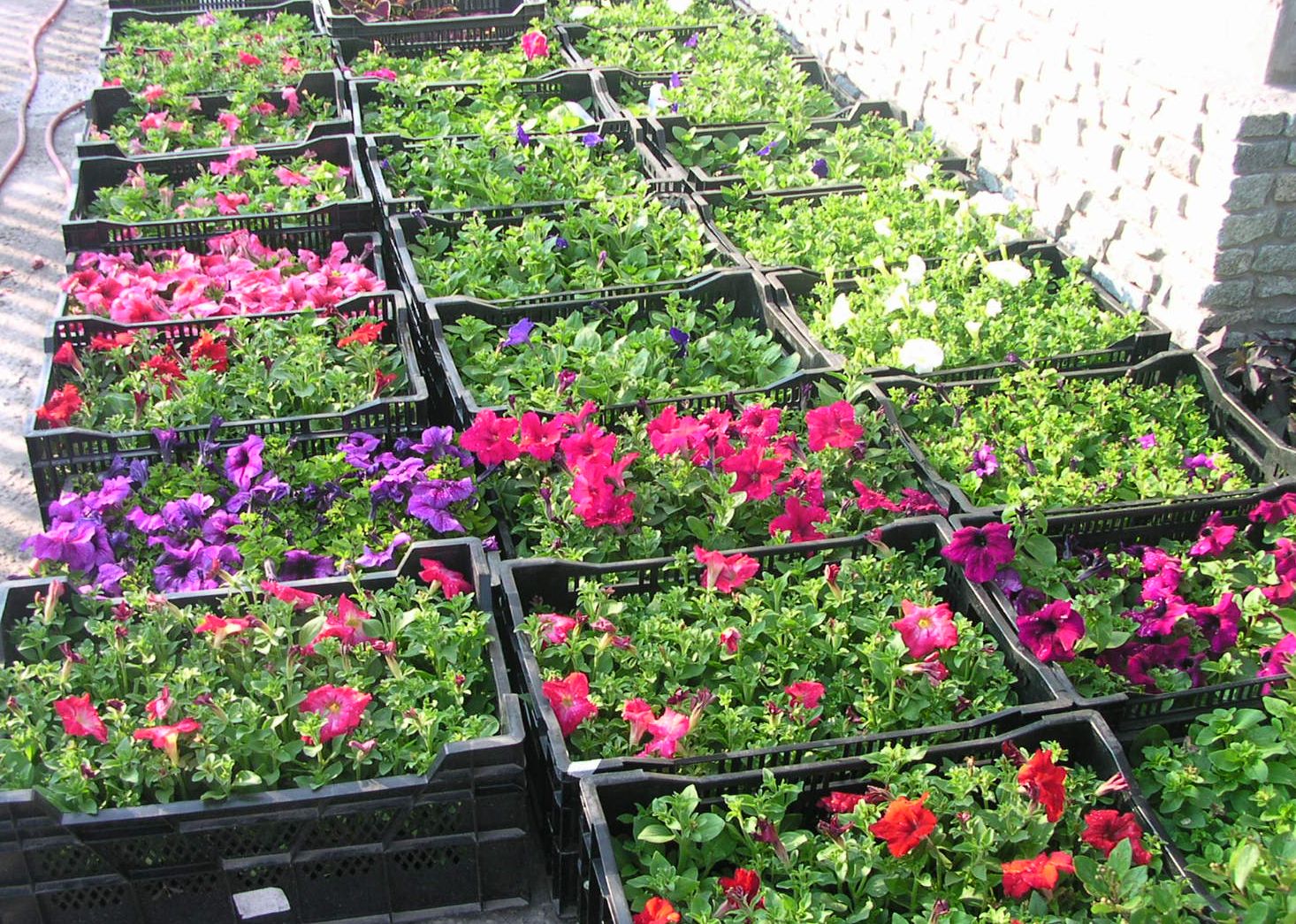 You may be interested in:
You may be interested in:Possible problems
For the care of camellia, even the most experienced florist can encounter problems such as:
- falling buds and flowers - with excessive soil moisture;
- the appearance of brown spots on the leaves - with strong exposure to sunlight;
- leaf fall - with a lack of moisture;
- camellia does not bloom - with a lack of light;
- the plant drops buds - when dry indoors;
- plant death - if the rules of care are not followed (untimely watering, lack of light, inappropriate soil, low humidity).
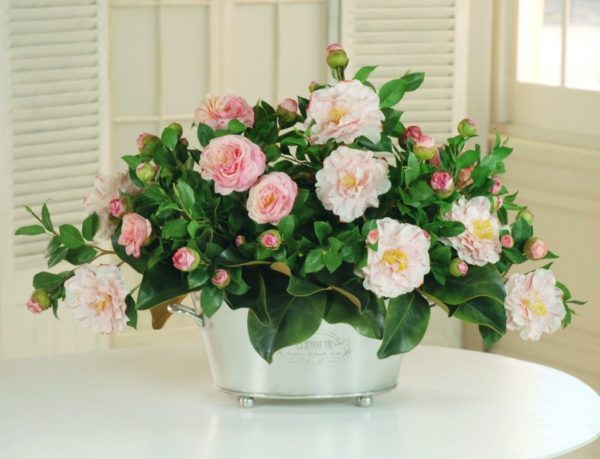
The main types of camellia room
Today, several types of camellia are distinguished and not all of them are suitable for growing at home. As a rule, the following types include indoor flowers:
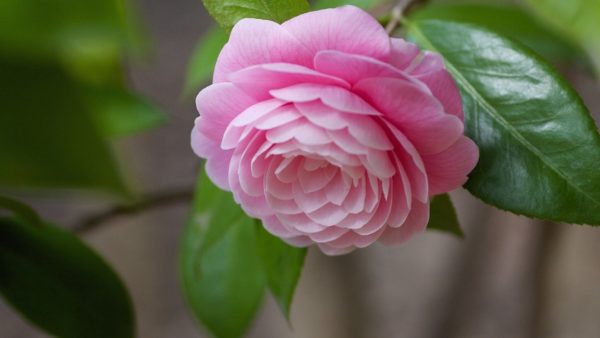
- Japanese camellia - a flower can grow up to 12 meters, however, in places of natural growth. It has good survival at home, most importantly, provide her with decent care. As you can see, in the photo the flowers of Japanese camellia can be double or semi-double with shades of white and red colors, but there are specimens with more variegated colors.
- Chinese camellia - a plant with oval leaves, white flowers and a delicate aroma, grows up to 15 meters.
- Mountain camellia is a plant in the form of shrubs up to 3 meters with thin oval leaves, large flowers and a delicate aroma.
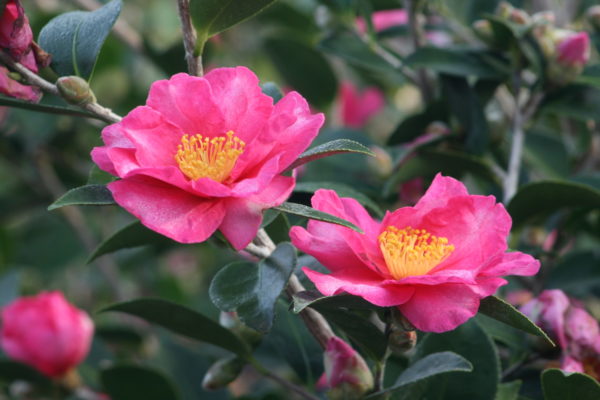
Camellia is a beautiful, but at the same time capricious flower, because it needs to ensure the conditions in which it is used to grow and develop. But if you learn all the rules for caring for such a plant, but such a magnificent beauty flower can settle in the house for a long time. In addition, there are signs that camellia is the best flower for women, which helps them to reveal all their beauty, attractiveness, sexuality and strength.




 Sow in the ground, without seedlings: 10 beautiful and unpretentious flowers
Sow in the ground, without seedlings: 10 beautiful and unpretentious flowers Platicodon planting and outdoor care
Platicodon planting and outdoor care Hosta - planting and care in the open ground in the Urals
Hosta - planting and care in the open ground in the Urals Oleander - care and growing at home
Oleander - care and growing at home